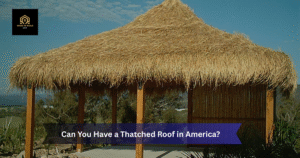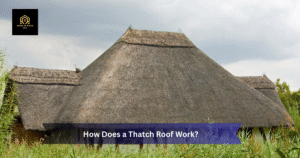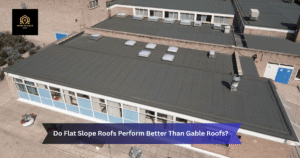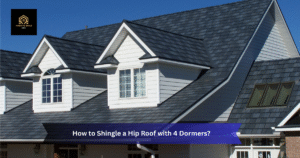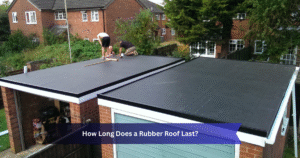When it comes to preserving your roof, homeowners and contractors are always seeking smarter, longer-lasting solutions. Copper roof strips have gained attention for their ability to prevent unsightly stains and slow shingle deterioration. But do they really work, and are they worth the investment? In this post, we’ll explore how copper strips function, how they protect your roof, and whether they can truly prevent shingle damage over time.
What Are Copper Roof Strips?
Copper roof strips are thin bands of copper installed near the peak of asphalt-shingled roofs. They’re usually positioned just below the ridge cap or across trouble-prone sections. When it rains, the water reacts with the copper and forms copper salts. These salts flow down the roof and act as a natural biocide that helps inhibit the growth of:
- Algae
- Moss
- Lichen
- Mold
While these organisms don’t destroy shingles immediately, they hold moisture against the surface, causing shingles to weaken, curl, and degrade faster than normal. That’s where copper comes in.
How Do Copper Strips Help Protect Roof Shingles?
Copper strips help in three main ways:
- Prevent Algae and Moss Growth
The most visible benefit is the streak-free roof surface. Algae can create black stains that not only look bad but also absorb heat and reduce shingle life. The copper kills the algae on contact and prevents new growth from forming. - Reduce Moisture Retention
Moss and lichen soak up water and keep the roof surface damp. Copper strips reduce these organisms, helping the shingles stay dry and resilient over time. - Improve Longevity of Asphalt Shingles
Shingles exposed to constant moisture and microbial growth tend to degrade faster. By minimizing these threats, copper strips can extend the effective life of your shingles, sometimes by several years.
Are Copper Strips Effective on All Roofs?
Copper strips are most effective when installed before algae or moss appears, as a preventative measure. They are especially useful in:
- Shaded or tree-covered homes
- Homes in humid climates
- Older roofs that are prone to moss growth
However, the strips may be less effective on steep roofs where runoff is fast, or where existing buildup is already extensive. In those cases, cleaning and treating the roof first is often necessary before adding copper.
How Long Do Copper Strips Last?
A well-installed copper roof strip can last 20 to 40 years, depending on environmental conditions and roof design. Over time, copper oxidizes and may change color (turning green or brown), but its antimicrobial properties continue to work. No reapplication or ongoing maintenance is typically needed, making it a low-maintenance solution.
Do Copper Strips Replace the Need for Roof Cleaning?
Not entirely. While copper helps prevent new growth, it won’t always remove existing moss or algae on its own. If your roof already has a buildup, a proper cleaning (either by soft-washing or using a professional roof cleaner) is recommended before installation.
Once installed, copper can greatly reduce or even eliminate the need for future chemical roof treatments.
How Are Copper Strips Installed?
Most copper roof strips are installed:
- Along the ridge line (roof peak)
- Beneath the top layer of shingles
- Fastened with roof-safe nails or adhesive
The process can be done during new roof installation or added later as a retrofit solution. It’s a relatively quick project for experienced roofing professionals and doesn’t require special tools.
Do Copper Roof Strips Stain or Damage the Roof?
Copper runoff may cause light greenish or bluish stains on nearby gutters or siding over time, especially on light-colored surfaces. However, this staining is typically minor and cosmetic. Copper strips do not damage shingles or underlayment when properly installed.
If aesthetics are a concern, zinc strips offer a less noticeable alternative, although they are slightly less effective than copper.
Cost of Copper Roof Strips
Prices can vary depending on roof size and labor, but here’s a general breakdown:
- Material only: Around $3–$6 per linear foot
- Professional installation: $7–$12 per linear foot (total)
For a standard 40-foot ridge line, you might expect to pay $300 to $500 for full installation.
When compared to the cost of repeated roof cleanings or premature roof replacement, copper strips are often a cost-effective long-term investment.
Are There Any Downsides?
Like all home solutions, copper strips have some limitations:
- Not a cure-all: Won’t fix roofs that are already in poor condition
- Runoff concerns: Can mildly stain certain materials or harm sensitive plants below
- Effectiveness varies: May not perform equally well on every roof pitch or in low-rainfall areas
Still, for most homeowners—especially in humid or shaded climates—these concerns are outweighed by the benefits.
Common Mistakes to Avoid
- Installing on a dirty roof: Always clean the roof before installation
- Improper placement: Strips must be placed high enough for water to flow over the entire roof
- Using too short strips: Full ridge coverage is key; avoid small patches
FAQs
Q: Can I install copper strips myself?
A: Yes, but it’s recommended for experienced DIYers. Hiring a roofer ensures proper placement and avoids shingle damage.
Q: Do copper strips work on metal or tile roofs?
A: They are primarily used on asphalt shingle roofs. For other materials, different solutions may be better.
Q: How soon do you see results?
A: It may take 2–3 rainfalls for copper salts to activate and begin reducing growth.
Q: Are there eco-friendly alternatives?
A: Zinc strips are another common option, though not as long-lasting as copper.
Q: Can I use copper gutters instead of strips?
A: While copper gutters release similar salts, they won’t provide full roof coverage like copper strips do.
Final Thoughts
Copper roof strips are a smart, effective, and low-maintenance method for preserving your shingles and preventing long-term roof damage. While they won’t reverse existing decay, they can significantly extend your roof’s lifespan and maintain its clean appearance. For homeowners looking to protect their roofing investment, especially in moisture-prone areas, copper strips are definitely worth considering.


